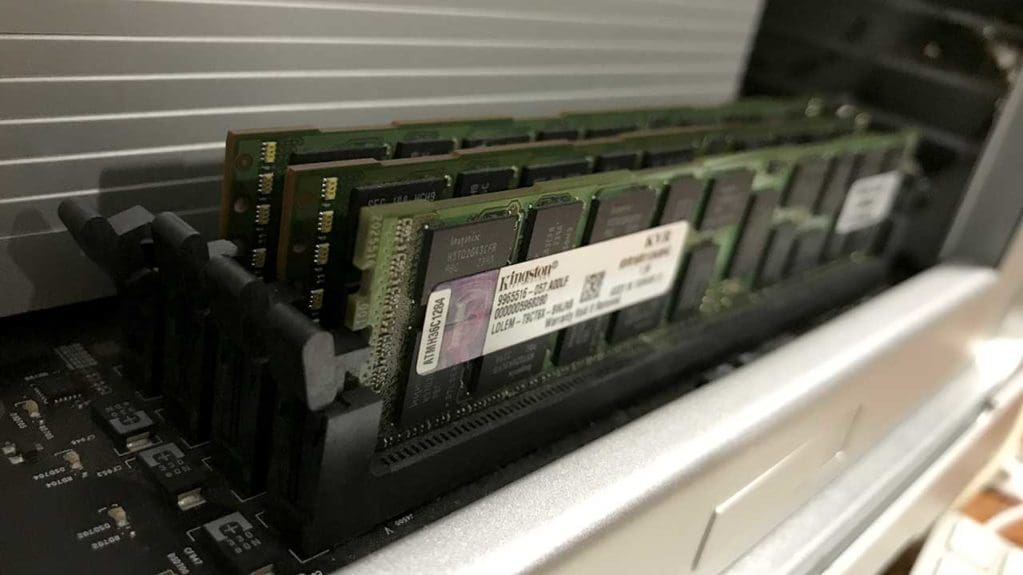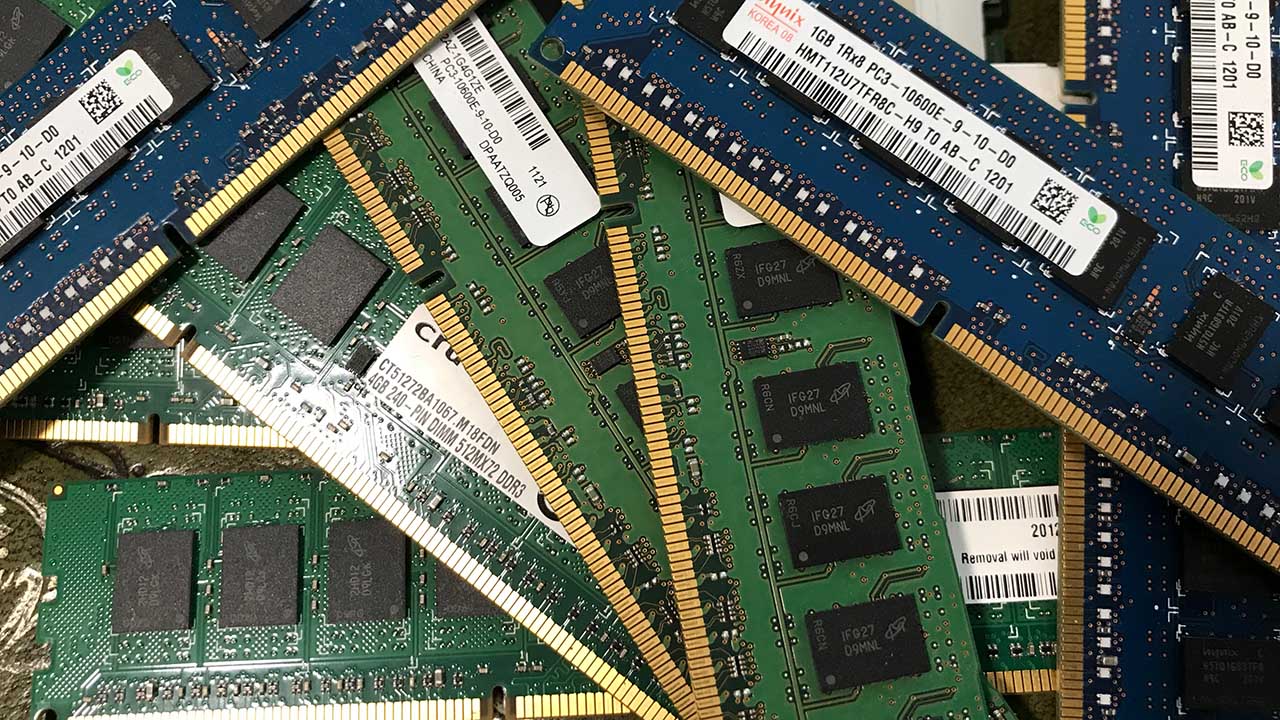In this series of tutorials, I’ve shown you how to completely overhaul your Mac Pro 5,1. Boosting the speed so that your old 7-10-year-old machine can hold it’s own against the latest MacBook Pro’s.
One area that I’ve overlooked due to the relative simplicity is upgrading your Mac Pro RAM. Really it’s just a case of popping it in and then off you go, but as others have ventured down this path of upgrade, I’ve discovered that even the RAM you choose can throw up some issues.
In this feature, I’ll be talking about the RAM and what fits in your machine. But more than that why it’s important to not only look at the RAM size 1, 2, 4, 8, 16GB etc but also the clock speed.
I won’t go into breaking down all the different numbers and letters that RAM modules seem to have, but I’ll give you the tools know how to go out and buy RAM and be happy that it will provide you with the best possible performance.
As a few have discovered less can be more, especially in the case of the dual-core machines. So let’s start and take a look.
The type of RAM that fits the Mac Pro 5,1 or upgraded 4,1 is: PC3-10600 DDR3 ECC
Search for this type of RAM and you’ll get an assortment of sizes. I’ll assume you’ve boosted your Mac with the upgraded 3.46 GHz 6-Core Intel Xeon (X5690) already.
The next stage is really important as it can hugely affect the speed of your machine and also impact your wallet.
As you look for RAM you’ll notice that there are a series of different clock speeds. The Mac Pro 5,1 have a minimum clock speed of 1333MHz. Essentially if you want the maximum performance for your computer you’ll need sticks (DIMMs) with that clock speed.
However, these can cost a fortune and a quick search will show that you can get old server RAM PC3-10600 DDR3 ECC rated at 1066MHz is a far cheaper option at half the price.
What effect do RAM clock speeds have on the Mac Pro performance
There’s obviously going to be a difference in the performance, but how much of a difference and is it worth skimping on the cost?
Only one way to find out and that’s to test the same machine in GeekBench 4 with the different types of RAM.
First up is 32GB of the 1333MHZ in two 16GB Modules.
Single-core Score = 3144
Multi-core Score = 14306
Now swapping those out for the same sized 16GB modules but as 1066MHz and we get the following results.
Single-core Score = 2765
Multi-core Score = 9875
So quite a big difference in speed, almost a 12% reduction in single core performance and a massive 31% performance drop on the multi-core.
From this, we can take it that cutting the MHz speed of the memory will make a huge difference to the performance of your machine.
Should you go for higher RAM Clock speeds or capacity
Let’s look at this practically. 64GB of RAM for a single core or 128GB of RAM for a Dual Core is the maximum you can physically fit into a Mac Pro 5,1.
But then, in reality, a single core really only makes use of 48GB and the dual-core 96GB, so any more than this and that additional RAM is wasted. Not only that but it can seriously impair performance.

Also if you fill all four slots of both RAM banks of the Dual core then it can limit the clock speed of your RAM to 800MHz and that seriously harms performance.
Essentially you need a balance. Forget the big capacities or 64GB or 128GB as you’re unlikely to use it all anyway. Instead, the best option is to fill your single core with as much 1333MHz RAM as you can afford, three 16GB, four 8GB DIMMs or two of each, will get you the maximum performance.
The technical reason for this is that slots 1 and 2 are on separate channels whereas slots 3 and 4 share a channel. So for optimal bandwidth, it’s best to leave slot 4 free, however, if you have applications that require the full whack of RAM then fill it.
On a single core, 32GB is sufficient for most video editing and definitely enough for Photoshop. 48GB is better and 64GB is ideal.
When loading the system with Photoshop, FCPX, Audition and Chrome you can expect the system to max out at about 38GB of RAM.
When it comes to the dual cores things get a little more complicated. Here it’s best to fill three slots on each bay, so I found that six 16GB DIMMs rated at 1333MHz provided the best performance giving a max of 96GB.
Part of the reason for this is that Mac OS can only recognise a max of 96GB.
Again as with the single core slots 3 and 4, as well as 7 and 8 share bandwidth so slot 4 and slot 8 should be left empty for maximum performance.
On the dual core, you also need to fill the two banks in a certain way. If you have two DIMMs then fill slot 1 and 2, three then 1,2 and 3, four DIMMs then 1, 2 and 5,6 then six 1, 2, 3 and 5, 6, 7 and eight fill the lot.
It really is a balance of capacity Vs speed. At any time you can open activity monitor and check the RAM usage. It’s actually surprising how little you need if the rest of your system is finely tuned.




Mac OS will recognize 256 GB of 32 GB ram modules on dual processor 6 core units when using open core to run the newer versions of Mac OS on 5.1 Mac Pros. 64GB modules are available but I have not heard of anyone using them in a 5.1 or older MacPro. More ram means more overhead so there may be an upper limit for best performance. Benchmark tests don’t always coincide with real world performance.
Will replacing the cpu from a 3.33 to 3.46 utilize/recognize 64gb of ram on a mac pro 2010 5,1 single core? I’m editing 4k video.
The 3.46 CPU is designed to be used in the Dual-core machines rather than a single core. If it does work then I don’t think you’ll see much of a performance boost. Also, the limit for the single-core machines is 48GB even with 64GB installed. I think there are workarounds along the same lines as the previous comment, but it will be quite a bit of work.